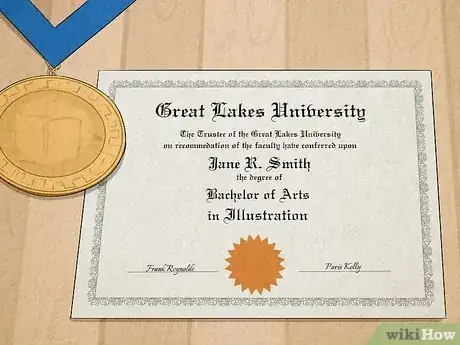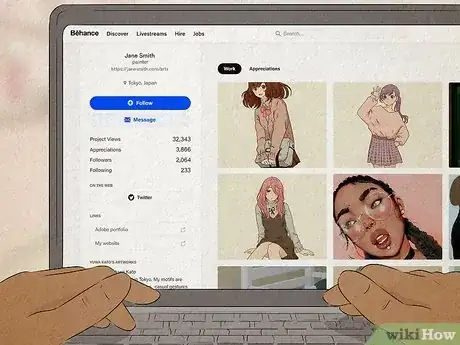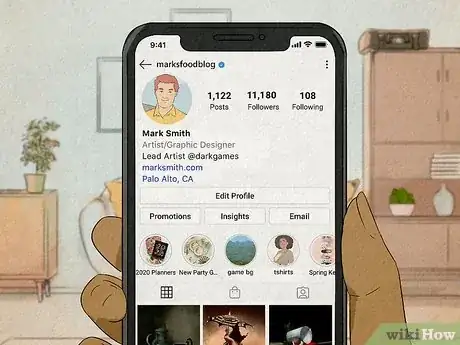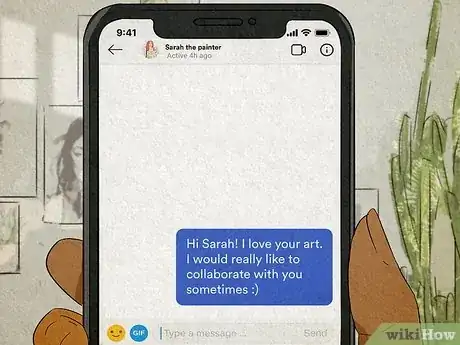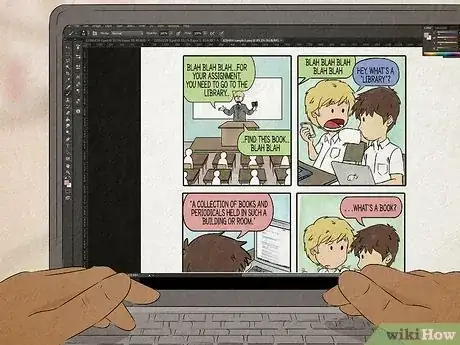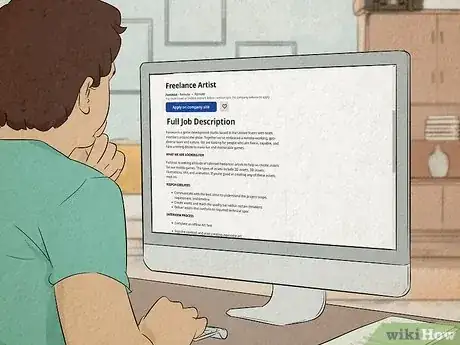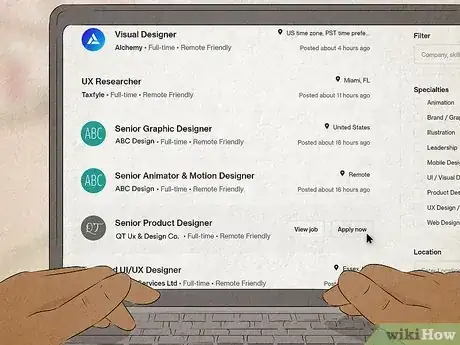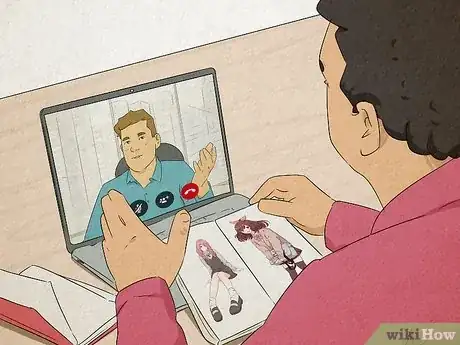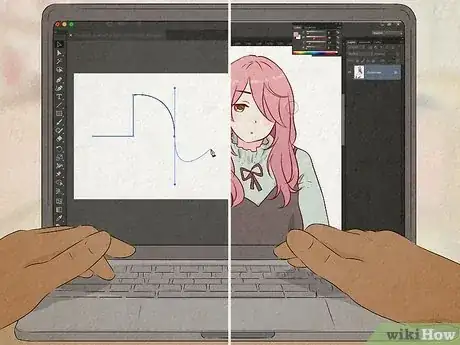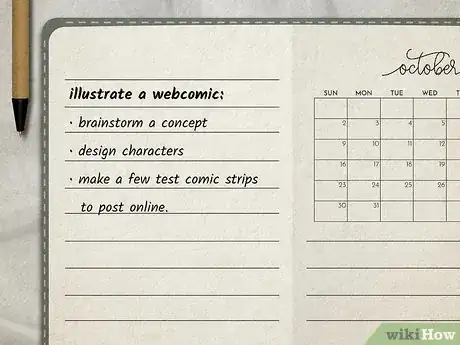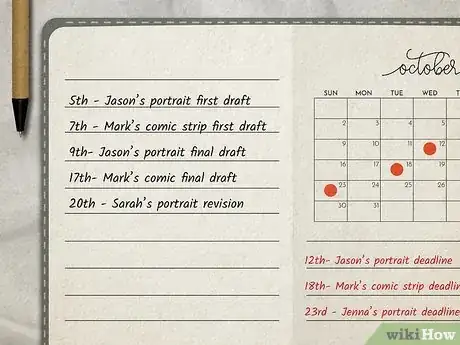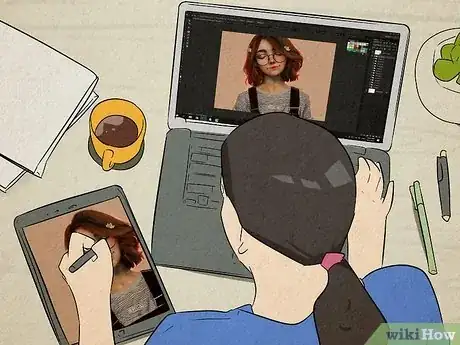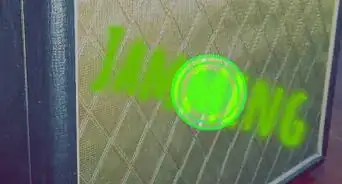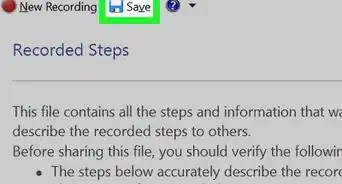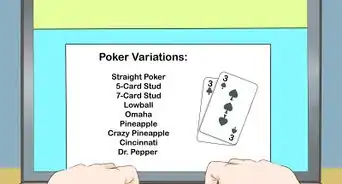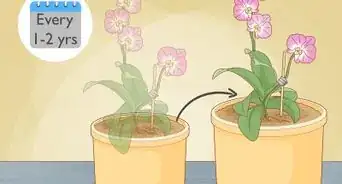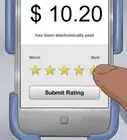This article was co-authored by Kieren Dutcher and by wikiHow staff writer, Glenn Carreau. Kieren Dutcher is a Professional Artist and a Teaching Artist at the NIAD Art Center in Richmond, California, and other venues around the Bay Area. With 30 years of experience, she specializes in colorful illustrations inspired by folk art, nature, and color. Kieren earned her Master of Education in Art Education from San Francisco State University and her BFA from the California College of the Arts. Her work has been published by St. Martin's Press, Uppercase Magazine, Highlights Magazine, in hospitals, and on TV. Her picture book Chinese and English Nursery Rhymes: Share and Sing in Two Languages (2010) won best book of the year from the Chinese American Library Association.
There are 8 references cited in this article, which can be found at the bottom of the page.
This article has been viewed 2,038 times.
Do you have a passion for illustration and storytelling through art, but aren’t sure how to turn it into a full-time career? We’re here to help you get started and learn everything you need to know. Illustrators are artists responsible for creating gorgeous images to represent a piece of writing, and they're in higher demand than ever with the popularity of ebooks and online publishing. Keep reading for a complete guide to becoming an illustrator—from developing your skills and building a portfolio to getting hired!
Things You Should Know
- Hone your skills by picking an illustration style (cartoon or realism, for example) and practicing daily. Challenge yourself, learn new skills, and build a strong body of work.
- Create an online portfolio with 12 to 16 of your strongest illustrations. Promote yourself on social media to build a network of contacts and get commissions.
- Decide what type of illustrator jobs you want and look for them using artist-focused job sites. Submit a portfolio, resume, and cover letter to be considered for a position.
- Take your time developing skills and look for work when you feel ready. Set incremental, achievable goals and manage your time wisely when you take jobs.
Steps
Establishing Yourself as an Illustrator
-
1Specialize in a particular artistic style. Think about what illustration style you like best and what type of work you're most skilled at. Do any aspects of your work set you apart from other artists? Pick an illustration style and use it to create all your future artwork so your work has a distinct and unique feel that makes you stand out to potential employers.[1] Possible styles include:
- Minimalist illustration involves distilling complex ideas into simple artwork, using clean lines and basic shapes to focus on the core subject.
- Realism can range from stylized but loosely realistic work to hyper-realistic art with intense lifelike detail.
- Flat illustration is a trend based in graphic design, with 2-dimensional visuals and flat colors as opposed to detailed 3-dimensional graphics.
- Don’t worry about developing this style overnight! Let it evolve naturally. Play around and experiment to find the art style you like most.
-
2Pursue a degree in illustration to give yourself an edge. College training is valuable for budding illustrators, especially because students are trained in a wide range of skills, from traditional fine art, drawing, and painting to computer graphics. Find and apply to art schools offering illustration degrees if you can afford to go and want a formal degree.[2]
- While a college education is definitely helpful and looks good on a resume, it isn’t the only way to become an illustrator. If attending college isn’t an option or you feel it’s not the right fit for you, that’s okay.
Advertisement -
3Take online illustration courses to develop your skills as an alternative. Platforms like Udemy, LinkedIn Learning, and Skillshare are a less-expensive alternative to a college degree, and they have hundreds of online courses and tutorials for artists looking to improve their skills. Check the art class offerings at your local community college, too; you can take classes there without enrolling in a degree program.[3]
- Many art institutions also offer online classes you can sign up for, and some universities have pre-college art programs you can sign up for if you're still in high school.
- Remember: your ability as an artist is the most important thing to employers. So long as your skills and portfolio are strong, you absolutely don’t need a college degree to be a successful illustrator.
-
4Hone your skills by practicing daily and doing projects in your free time. Continually build your skills and incorporate new elements into your signature style. Take advantage of your free time and use it to take classes, study, and above all, practice your art. Work on learning new concepts and developing polished illustrations to use in your portfolio.[4]
- Do a little bit of work every day. Even on days when you’re busy with classes or jobs, take just 10 or 20 minutes to practice a style or technique in your sketchbook.
- Work hard and understand that you’ll be building up illustration skills throughout your career. It’s a never-ending process!
- Challenge yourself and take on projects you've never tried. For example, if you want to illustrate book covers, start drawing for a wide range of genres—fantasy, romance, mystery, and more.
-
5Build a portfolio featuring your best work to show off your talents. A portfolio is a curated selection of your work, and it's the most important part of an artist's job application. Curate 12 to 16 of your strongest pieces with a consistent style but a wide range of subject matter. Employers should see your versatility and get a sense of your artistic style.[5]
- Platforms like ArtStation, Behance, Portfoliobox, and Wix allow you to create a customized portfolio.
- Pick illustrations you feel confident about! A portfolio is only as strong as your weakest piece, so don't include anything you're not satisfied with.
- Add to your portfolio over time as you learn and take on new jobs. An experienced illustrator's online portfolio might have multiple galleries with 10 to 20 pieces each.
- You can still build an impressive portfolio if you don't have professional experience; even university and personal projects can show off your skills.
-
6Post illustrations on social media to help others find your work. Create Facebook, Instagram, and Twitter pages where you can showcase your illustrations and link to your portfolio in a bio or description. Many working artists use social media to network, attract fans of their art, and pick up private commissions.[6]
- Use hashtags to your advantage. Tag each illustration you post with hashtags like #digitalart, #illustration, #sketchbook, or #artistsoninstagram.
-
7Network with other illustrators and build your connections. Social media also helps to expand your network of illustrator and designer contacts. Join sites like Dribbble and Instagram to promote your work and introduce yourself to fellow illustrators whose work you admire. The more contacts you have, the more opportunities will come your way.[7]
- Not only can connections help you get hired, but they can also help you hone your skills and give tips if you need them.
- See if there are any professional societies or groups you can join for illustrating, such as the Society of Children's Book Writers and Illustrators.
Finding Illustration Work
-
1Choose the type of illustration job or industry you want to work in. Illustrators create visual representations of a particular subject matter—but that description encompasses plenty of different jobs! Illustrators can work on books, draw cartoons, design greeting cards, illustrate medical journals, design fashions, or create storyboards. Once you know what you want to do, tailor your artwork toward those jobs.[8]
- Book illustrators create stylized images for a book's cover and interior and adopt an art style that’s appropriate to the book's age demographic.
- Cartoonists draw comic stips, either for newspapers and online news publications, webcomics, or graphic novels.
- Medical illustrators design images for textbooks and medical journals. Before starting the job, they typically get special training in biology and human anatomy.
- Storyboard artists create graphic representations (storyboards) of a whole sequence of events, often for entertainment media like movies and video games.
-
2Research potential clients and use their criteria to develop your resume. Start by checking out popular job sites like Indeed, Glassdoor, and LinkedIn. Find jobs you'd be interested in pursuing and are qualified for, and read their descriptions to see what illustration employers are looking for. Then, build your resume to address those needs and showcase relevant skills that’ll get you noticed.[9]
- Important skills for an illustrator include strong traditional drawing skills like knowledge of drawing a portrait and sketching, plus an eye for color, proportion, and composition.
- If there are any businesses you'd like to work for—like a particular publishing company or webcomic platform you enjoy—start your research there.
-
3Apply for jobs using both popular job sites and art-specific platforms. After preparing all the materials you’ll need, start searching and applying for the jobs you’re interested in! Look for jobs on frequently-used job boards like LinkedIn and Indeed, and on job sites for artists like Dribbble and Behance. Check out artist-focused staffing agencies, too, like Creative Circle.[10]
- Include a link to your portfolio in every job application, and write a cover letter whenever there’s a prompt for one (even if it’s listed as optional).
- If an employer reaches out for an interview, prepare for the interview beforehand and bring a physical copy of your portfolio with you (or have a link to your website ready if it’s a virtual interview).
-
4Build a client base by taking commissions and freelance jobs. Many illustrators choose to do freelance work rather than be steadily employed by a single business. Update your social media pages and portfolio to announce when you're taking commissions and take on a handful of freelance jobs at a time. Provide interested parties with prices and examples of your work.[11]
- Social media is a great source of commission-based work, but you can also check out job sites specializing in freelancing, like Fiverr and Upwork.
- Don't overextend yourself by saying "yes" to every commission request you get. Consider how much time you have and how much work you can reasonably take on first.
- While some people might try to get you to do illustration work for "exposure" rather than money, your time is valuable and so is your art, so accept financial compensation only.
-
5Teach online courses for new illustrators while you establish yourself. As you become a better illustrator, why not help others learn what you know? Post illustration guides, lessons, and tutorials on a Patreon account, or set up a Teachable account to build an illustration course for students. You could even just prepare and post video tutorials on YouTube to build your audience![12]
- Teaching other people will also help you hone your skills further because it requires you to fully explain concepts and research each topic as you prepare lessons.
- Patreon is a good option because it allows people to subscribe to your account for a monthly fee and view the content you post in exchange. They learn new techniques and you get paid!
- Teachable is another popular option because it lets you build a whole course and market that course on the Teachable platform, where students can join for a fee.
-
6Wait to quit a current job until you start getting commissions. If you're already employed with a steady income, shifting into freelance illustration work is a big step! Experienced illustrators might be comfortable with striking out on their own without a day job, but if you're a beginner, it's best to wait until you have a portfolio and a few commissions lined up.[13]
- There's no definitive "right" time to quit your old job. If you feel ready and have enough projects lined up to cover the next couple of months financially, take the opportunity to launch your new career.
Tips for Beginner Illustrators
-
1Familiarize yourself with commonly-used illustration software. Develop a working knowledge of common design software, including how to use Adobe Illustrator and make art in Adobe Photoshop (which are the industry standards). The more you know about illustration software, the more valuable an employee you become.[14]
- Look at listings for your dream illustration jobs. What software requirements do they have? Start by learning those programs.
- Even if you work with traditional mediums like pencils and charcoal, your portfolio should also demonstrate your knowledge of digital mediums and software.
-
2Set goals for yourself and make a plan to achieve them. Rather than diving headfirst into illustration, try setting small goals for yourself. Map out personal projects you want to complete in your free time and set incremental deadlines to get them done. Do the same for commission work, taking a couple at a time while you’re still in school to get a feel for the process.[15]
- Say you want to illustrate a webcomic. Break that goal into smaller steps by brainstorming a concept, then designing characters, and finally making a few test comic strips to post online.
- Once you can handle smaller goals, start thinking about larger ones like starting your illustration business. Set incremental goals like building a portfolio, setting up a website, and marketing on social media.
-
3Manage your time wisely and stick to every deadline. Time management and dependability are important skills for illustrators to master, and doing so will help you build up your clientele! Communicate clearly with all of your clients to determine what they need and when you can deliver it to them. Once you agree on a deadline, stay on top of your work, organize your tasks, and turn in everything on time.[16]
- Ensure that the deadlines are reasonable so you can produce high-quality work. If you need a certain amount of time, say so upfront so there’s no confusion later.
-
4Celebrate your progress without comparing yourself to other illustrators. Becoming an illustrator isn’t a straightforward path; everyone finds success at their own pace, and developing your skills is a lifelong process. So, don’t get discouraged if you network with illustrators who are more established than you. They’ve undoubtedly overcome their own struggles, and one day you’ll reach their level too![17]
- To that end, take your time. It’s okay if you don’t have all the experience needed for your dream job right away. Give yourself time to grow as an artist and find jobs well-suited to your skills.
References
- ↑ https://www.dandad.org/en/d-ad-become-an-illustrator-new-blood-advice/
- ↑ https://nationalcareers.service.gov.uk/job-profiles/illustrator
- ↑ https://nationalcareers.service.gov.uk/job-profiles/illustrator
- ↑ https://www.designhill.com/design-blog/how-to-master-adobe-illustrator-and-become-a-professional-illustrator/
- ↑ https://www.studentartguide.com/articles/how-to-make-an-art-portfolio-for-college-or-university
- ↑ https://www.dandad.org/en/d-ad-become-an-illustrator-new-blood-advice/
- ↑ https://www.computercareers.org/how-to-become-an-illustrator/
- ↑ https://www.computercareers.org/how-to-become-an-illustrator/
- ↑ https://taaryn.com/blog/2017/11/26/how-to-kick-start-your-career-as-an-illustrator
- ↑ https://taaryn.com/blog/2017/11/26/how-to-kick-start-your-career-as-an-illustrator
- ↑ https://www.computercareers.org/how-to-become-an-illustrator/
- ↑ https://www.futurity.org/learning-students-teaching-741342/
- ↑ https://taaryn.com/blog/2017/11/26/how-to-kick-start-your-career-as-an-illustrator
- ↑ https://www.designhill.com/design-blog/how-to-master-adobe-illustrator-and-become-a-professional-illustrator/
- ↑ https://www.dandad.org/en/d-ad-become-an-illustrator-new-blood-advice/
- ↑ https://www.artworkarchive.com/blog/how-to-stop-fearing-deadlines-in-your-art-business
- ↑ https://www.dandad.org/en/d-ad-become-an-illustrator-new-blood-advice/

